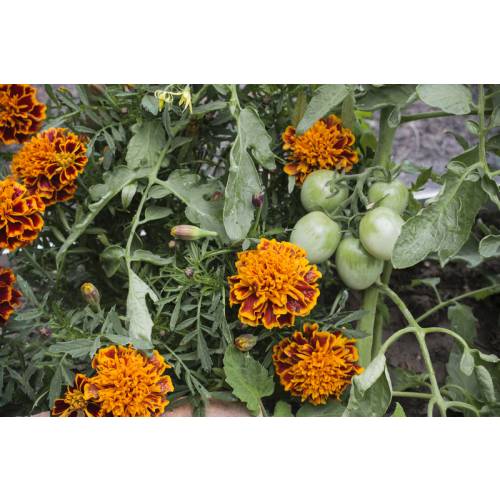
Succeed with vegetable garden
The companionship of vegetables
- Details
-
According to this method, vegetables can gain mutual benefits, or on the contrary be harmful to one another if grown together. The art, therefore, is to try the best possible combinations.
The principles of vegetables' companionship
Each plant has an effect on its neighbouring plants: it is in observing the positive or negative interactions that the idea of plant companionship is born. This technic has to be tried. It offers a reciprocal protection to the plants, a better nutrition and numerous others benefits. The best way of associating vegetables, ideally, has to be planned before planting out. Otherwise, finding the right companion for plants already in situ can become a real headache!
Positive interactions
The companionship of vegetables presents several advantages, like the reciprocal protection against plants' bugs, a better repartition of the nutritive elements into the soil or again protection against wind and heat, for sensitive vegetables.
Protective companionships
In planting large leafed vegetables (like chards or salads) next to cabbages, the cabbages' eating caterpillars (the cabbage white butterflies) find themselves on plants that they do not eat, and therefore this reduces the attacks on your cabbages.
Also try to grow your vegetables in small, mixed groups rather than in larger, homogenous beds. The dilution of plants grown reduces greatly attacks from bugs, which detect less easily their favourite vegetable plants.
In a small vegetable patch
When the vegetables are grown tightly together, as this the case in raised vegetable beds, carefully choosing which vegetables to grow next to the others is imperative. For examples, cabbages have large leaves but they are not particularly greedy. Vegetable plants which are sensitive to the same bugs (for example: Turnips, Radishes and rocket) have to be grown as far away as possible from each other. Non sensitive vegetable plants should be grown in the separating, intermediate beds.
Helping each other vegetables
Next to sun or drought sensitive vegetable like salads, especially in Mediterranean areas, grow a higher growing vegetable such as tomatoes or peppers. This method also works against wind, by growing higher growing plants (sweetcorn next to salads, for example).
On the other end, the camouflage of sensitive pants by growing aromatic plants or strong smelling plants (garlic, Lemon Balm, Parsley, Thyme...), is not really efficient: do not focus on this!
Shared Resources
Vegetables can happily grow together without competing. For example onions and strawberries do not need the same nutritional elements from the soil and therefore can be grown next to each other, beans and gourds too. (Pumpkins and Courgettes). - Photos (4)




